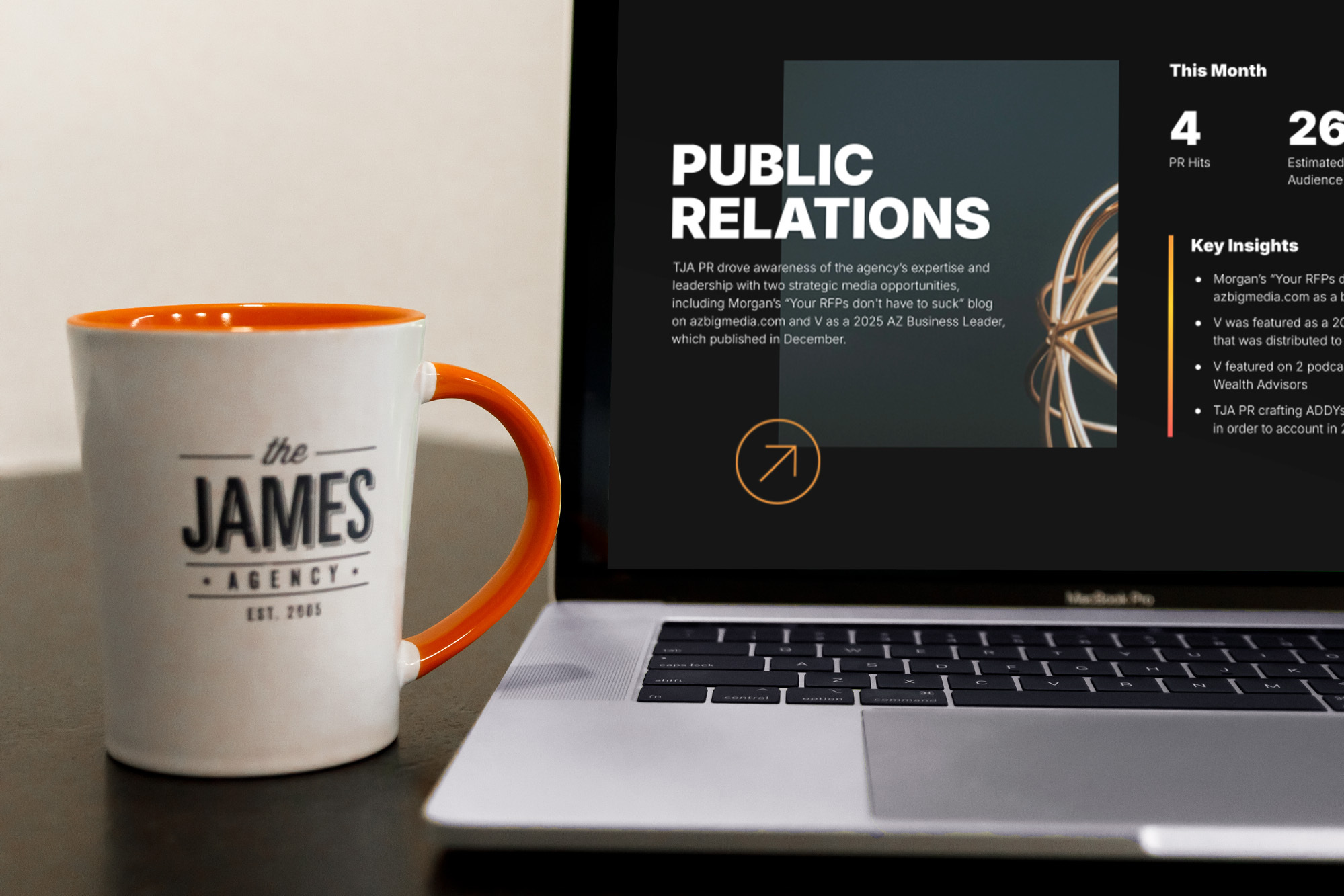In a world where data is practically falling from the sky, figuring out what to do with it can feel like trying to catch raindrops with a coffee mug. Enter integrated reporting—a method that consolidates data from various sources into one cohesive narrative, making it easier to uncover trends, track performance and drive results. Think of it as the superhero of data, swooping in to bring order to the chaos.
At The James Agency, we’ve seen firsthand how this approach not only simplifies reporting but also drives real results for our clients. In order to paint a picture of just how effective it is, we’ll break it down and show you why.
Why Should You Care About Integrated Reporting?
Integrated reporting isn’t just some trendy buzzword—it’s the game-changer your advertising strategy has been waiting for. Think of it as the Meryl Streep of reporting—flawless, compelling and so good it makes everything else look better. It’s the Golden Globe-winning blockbuster with a 100% Rotten Tomatoes rating, where every plotline fits perfectly and always leads to the big payoff.
Traditional Reporting vs. Integrated Reporting:
- Traditional Reporting: Data all over the place. You’re assembling IKEA furniture with only half the instructions, random screws lying around and not an Allen wrench in sight.
- Integrated Reporting: Everything’s in one place. The manual is detailed, the Allen wrench is in the box and each piece fits so perfectly that you’re proud of the result.
With traditional reporting, you get some data over here, some over there…and good luck trying to make sense of it. It’s disjointed and leaves you playing detective just to connect the dots.
Integrated reporting, on the other hand, takes all those fragmented metrics (social media ROI, email engagement, website traffic and even those old-school offline conversions) and weaves them together into one cohesive narrative.
By breaking down silos and weaving together all your data, integrated reporting helps you:
- Uncover trends you might have missed.
- Track the full customer journey across channels.
- Align your team on what’s working (and what’s not).
It’s not just about knowing what happened—it’s about understanding why. And knowing the “why” is the difference between good decisions and great decisions that drive real results.
Addressing Common Pain Points
We’ve all been there—staring at a report that’s full of numbers but gives you no idea what to do next. While integrated reporting consolidates insights into one clear, actionable view, traditional reporting leaves you with disjointed data, inefficiency, missed opportunities and frustrated clients. Let’s dissect that a little more:
- Fragmented Data: You’ve got insights everywhere and trying to piece them together is a frustrating process that leaves gaps in the big picture.
- Inefficiency: Wasting hours on reports that don’t fully capture your campaign’s performance.
- Missed Opportunities: You can’t connect your ad spend to actual business outcomes like revenue or customer retention.
- Lack of Context: Data points without context are hard to interpret and act on.
- Manual Processes: Manual data compilation takes time away from strategy and analysis, slowing down decision-making.
- Inconsistent Metrics Inconsistent reporting across sources means you’re comparing apples to oranges—undermining your insights credibility.
- Siloed Findings: Separate reports make it hard to see the big picture and assess how all your efforts are working together.
- Long-Term Measurement Challenges: Measuring long-term impact is nearly impossible when your data is disconnected and incomplete.
Turning Those Struggles Into Solutions
Integrated reporting solves these challenges by creating a single source of truth. By centralizing all your data, it gives you a clear view of what’s going on. No more guessing. It’s like having GPS for your campaign performance—you’ll know where you’re going and how to get there.
Here’s a quick rundown of what you stand to gain:
- Improved Decision-Making: Make smarter, faster decisions with real-time insights that keep you ahead of the game.
- Unified View of Performance:View all your advertising channels (digital, TV, print, etc.) in one easy-to-read report, making cross-channel performance comparison a breeze.
- Enhanced ROI: Directly connect performance metrics to tangible business outcomes, giving you a clearer picture of ROI.
- Efficiency Gains: Streamline your reporting process, freeing up time for strategy and innovation rather than manual number crunching.
- Alignment Across Teams: Align creative, media and analytics teams, ensuring everyone’s on the same page and working toward the same goals.
- Increased Accountability: Clear, transparent metrics show exactly how your ad spend is driving results, boosting accountability at every level.
- Enhanced Collaboration: Everyone’s working with the same data, so it’s easier to collaborate with a shared understanding of campaign success.
- Future-Proofing: Stay ahead of trends with a dynamic, adaptable reporting approach that evolves as your business grows.
Your Strategic Partner in Integrated Reporting
Advertising is more competitive than ever, but integrated reporting gives you the clarity and flexibility to stay ahead of the curve. At TJA, we make integrated reporting easy, impactful and surprisingly easy to understand. We’re committed to making it work for you. No more fumbling with fragmented data or crossing your fingers for good results. With the right strategy, it’s all about transforming your data into a story that fuels success.
Ready to take your advertising strategy to the next level? Get in touch with us today and let’s turn those numbers into meaningful results.




